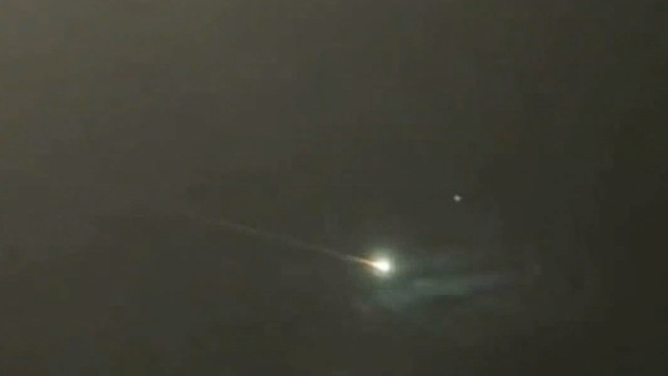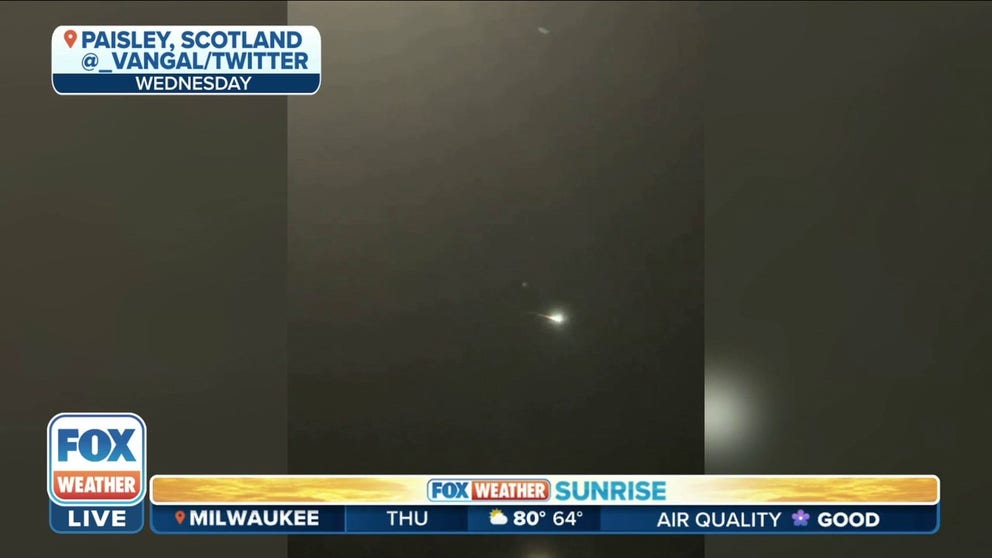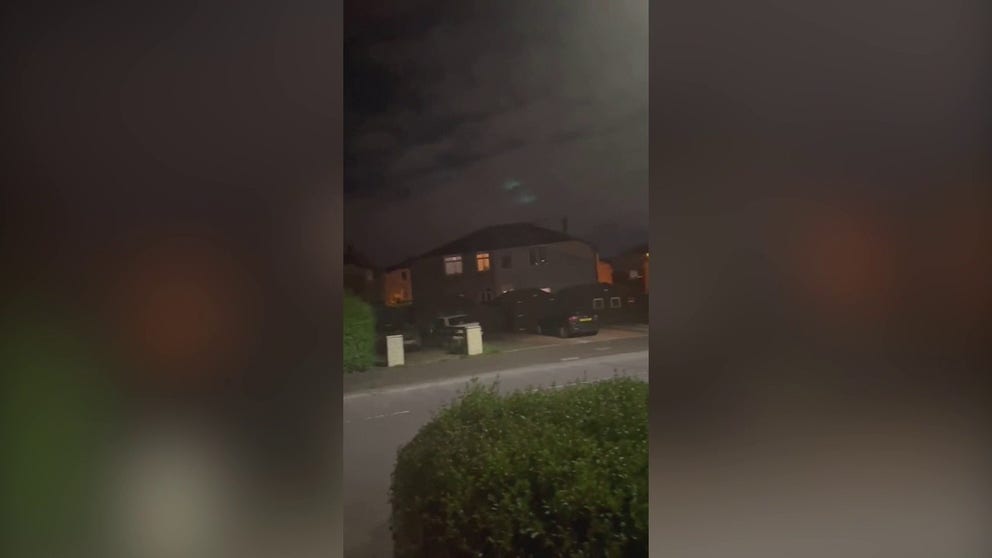Meteor or space trash? Bright fireball flashes over the UK
According to the UK Meteor Network, it’s possible this fireball is no space object but a piece of space junk falling back to Earth.
Streaks seen across UK is consistent with space debris
FOX Weather Space Specialist Emilee Speck says the streaks seen across the UK is consistent with space debris.
A fireball streaked across the skies of the United Kingdom on Wednesday night, earning more than 800 possible meteor reports to the UK Meteor Network.
Documentation of the fireball event rolled in from Northern England, Ireland and Scotland. Video captured by onlookers shows the fiery object flashing across the night sky.
However, the greenish-blue blaze is under debate about its origin – and no, it’s not aliens.

A possible meteor or space debris creates a fireball in the sky above Paisley, Scotland on Wednesday, Sept. 14, 2022. (Image: @_vangal/Twitter)
According to the UK Meteor Network, this fireball may not be a natural space object but a piece of space junk falling back to Earth.
Most bright meteors or fireballs last only a few seconds. This fireball was spotted from London to Ireland, clearly traveling a long distance before impacting the ocean. The object was recorded flying across the sky above the UK for about 20 seconds.
Fireball shoots through the sky over Scotland
The UK Meteor Network received hundreds of reports about a fireball over Northern Ireland and Scotland.
"The preliminary trajectory has been calculated by the International Meteor Organization and indicates that the object, which we now believe to be space debris, would have landed in the Atlantic south of the Hebrides," the UK Meteor Network tweeted.
When space debris from human-made satellites, spacecraft and rocket hardware de-orbits, the objects can appear like a fireball in the sky as it burns up in Earth’s atmosphere.
According to NASA, approximately 23,000 pieces of space debris larger than a softball are orbiting the Earth. Some 27,000 objects are tracked by the Department of Defense’s global Space Surveillance Network sensors, but many more objects in low-Earth orbit are too small to be tracked.
Private companies like SpaceX must have a de-orbit plan for the spacecraft they launch into low-Earth orbit. When a satellite is no longer functioning, it either needs to be put in a graveyard orbit further from Earth or brought down for de-orbit.
According to the American Meteor Society, thousands of fireballs impact Earth's atmosphere daily, but most happen over oceans or are covered by daylight. A rare daytime meteor was captured by NOAA's GOES-17 satellite lightning mapper in July and spotted by onlookers in New Zealand.
Suppose you happen to see one of these bright objects in the sky? In that case, you can report your sighting to groups like the UK Meteor Organization, American Meteor Society or the International Meteor Organization.

